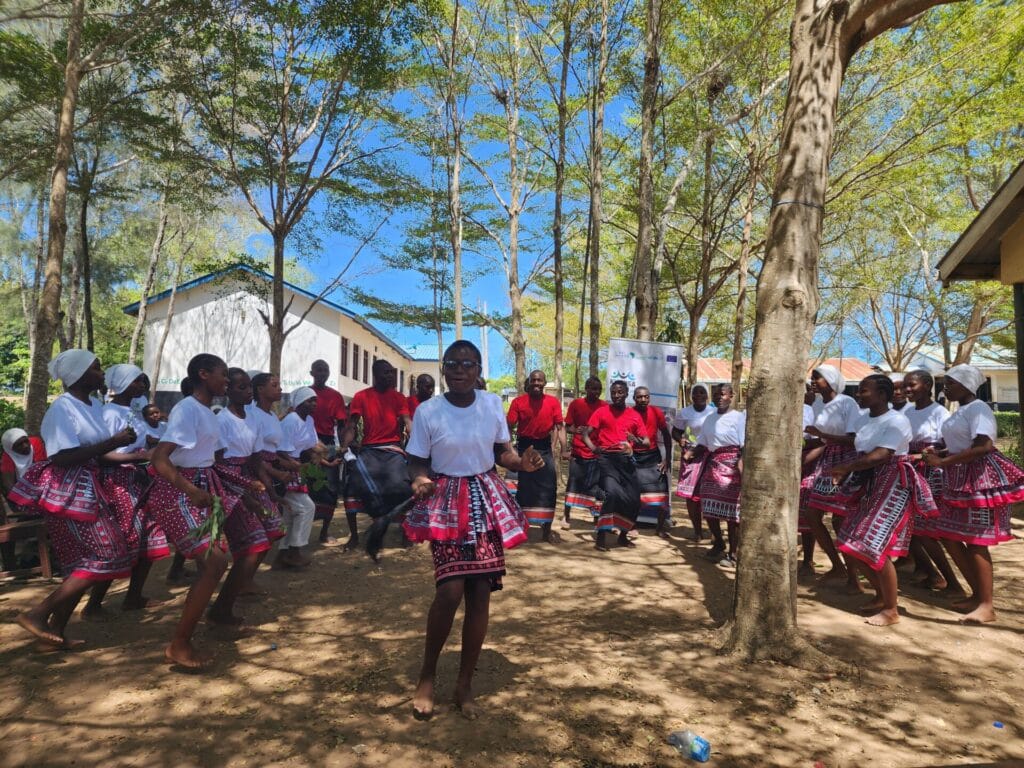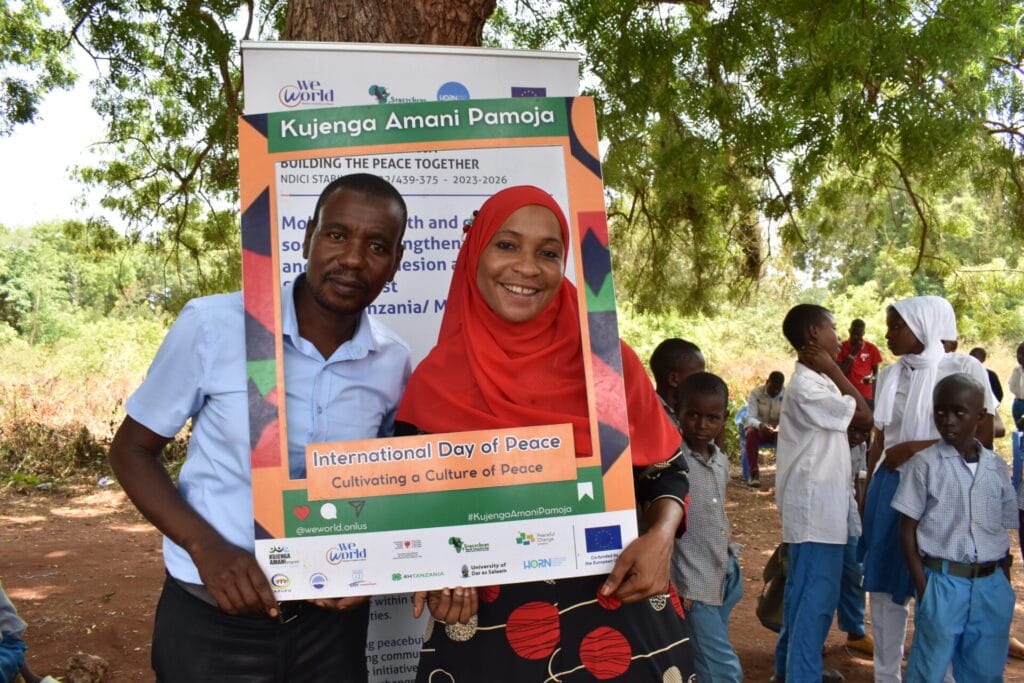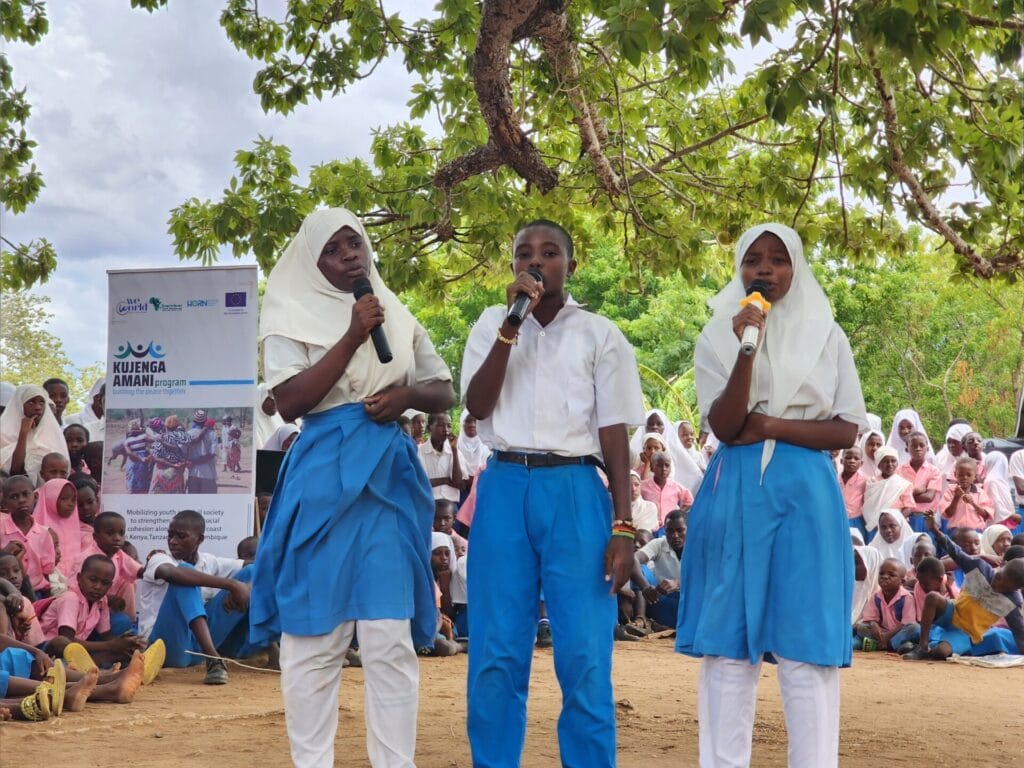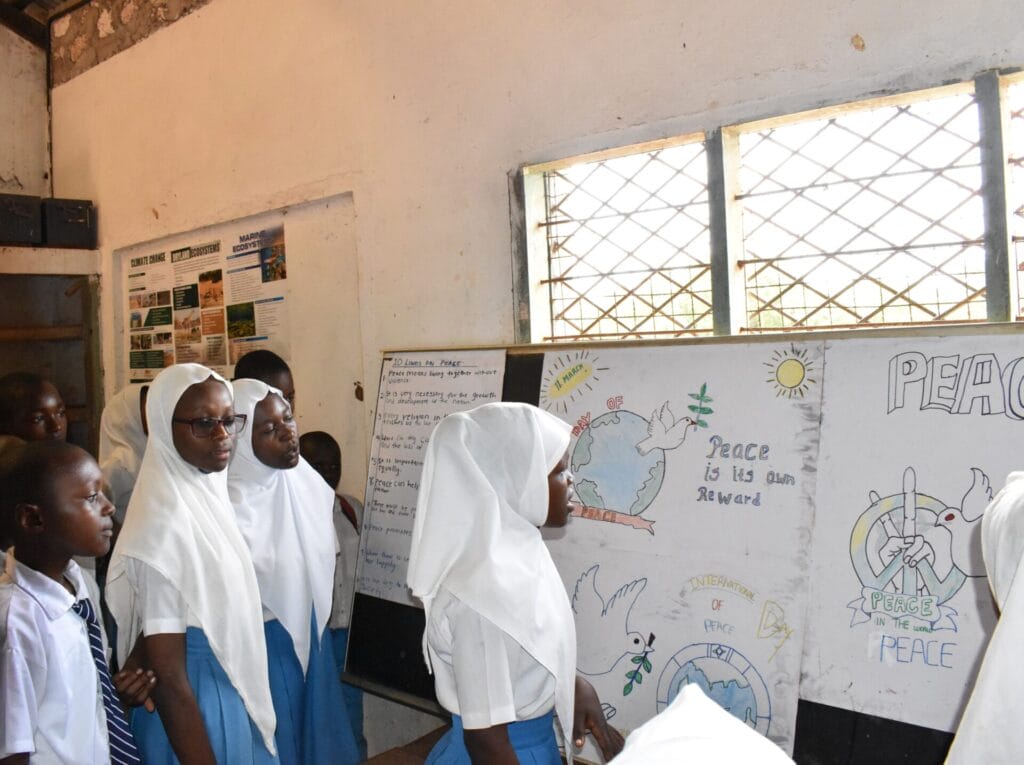
"After I lost my father, I felt broken and alone," shares Sarah Dio, a student at Matuga Primary School in Kwale County, Kenya. "But through the Amani Peace Clubs, I received counselling and support from my teacher. I found healing in dance and art. Today, I’m back in school and able to focus on my studies."
Sarah is one of many students who took part in a series of school art exhibitions organised through the Kujenga Amani Pamoja (KAP) project, co-funded by the European Union and implemented by WeWorld. The initiative brought together young people from twelve primary and secondary schools across Kwale County, using creativity as a tool for healing, dialogue, and change.
These exhibitions celebrated art not just as expression, but as a force for peacebuilding, helping children and communities foster unity, resilience, and a sense of belonging.

At its core, the Kujenga Amani Pamoja project empowers young people to become agents of peace and positive change within their communities. Drawing inspiration from the values of Swahili culture, the project supports youth in building bridges where there are divisions and hope where there is hardship.
The exhibitions began on March 11th at Matuga Primary School and continued throughout the month, lighting up schools like Bowa, Jomo Kenyatta, Mwakigwena, and Kwale Primary. From there, the journey continued to Mkwakwani, Mvindeni, Menzamwenye, Kiwegu, Lungalunga, and culminated at Lungalunga Secondary on March 27th.
Each event became a vibrant showcase of creativity, with students proudly presenting songs, paintings, poems, and performances focused on themes of peace and social harmony. These were not just stand-alone events - they marked the culmination of months of reflection and learning through the Amani Peace Clubs.
As part of this journey, students crafted “10 Guiding Lines on Peace” - short, powerful affirmations designed to inspire peaceful living. One stood out: “It is our duty to maintain peace in our society.” These messages weren’t simply recited. They were turned into murals, woven into music, and brought to life on stage - amplifying students’ voices across their communities.

The exhibitions took on even deeper significance in the context of rising youth gang activity in Kwale County. Locally known as Mapanga, these gangs often emerge within schools or are formed through peer networks.
"These gangs don’t start in the streets - they start in schoolyards," one teacher explained. "But once we give children space to express themselves - once they begin painting, writing poems, or singing songs about peace - something changes. When they say, ‘My art is about peace,’ that’s when you know transformation has begun."

Like Sarah, many students shared how the Amani Clubs helped them cope with grief, trauma, and emotional challenges - giving them a renewed sense of purpose and connection to their education.
"You can see the difference," said Mr. Kibe, one of the participating teachers. "Students are more engaged, more expressive, and more confident. They’re not only growing as individuals, but also becoming positive forces within their schools and communities."
Each exhibition was a celebration of hope, resilience, and possibility. More importantly, they served as a reminder that peace starts from the ground up - and that young people, when empowered, can lead the way.
Through Kujenga Amani Pamoja, youth across Kwale County are finding their voices, telling their stories, and painting a future rooted in peace.



